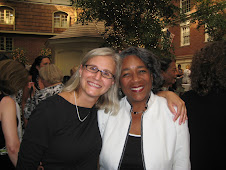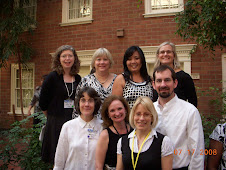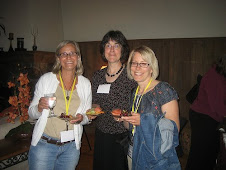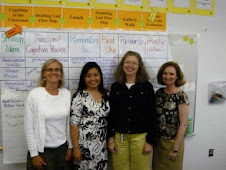 To help students with reading comprehension and bring the setting of a novel to life, I have students, working in groups, dissect an assigned portion of the novel to uncover all of the details. I assign each group a section of the novel that contains just one setting, and I even tell the students the setting that they will present to the class. This assignment worked well with Brave New World this past fall, and the American Literature teachers are planning on trying it with Huck Finn.
To help students with reading comprehension and bring the setting of a novel to life, I have students, working in groups, dissect an assigned portion of the novel to uncover all of the details. I assign each group a section of the novel that contains just one setting, and I even tell the students the setting that they will present to the class. This assignment worked well with Brave New World this past fall, and the American Literature teachers are planning on trying it with Huck Finn.Steps of the setting assignment as given to students:
- After the lottery for setting selection, base group members will skim the assigned pages, jotting down all objects they encounter in those pages in their notebooks. This is similar to what we did for objects in Room 271.
- Then students will take all the sub-parts and work back to the whole of the assigned setting by organizing the details in a brace map. The brace map should be created in your notebook.
- The frame of the brace map should contain the most illustrative and visual quotation, in your opinion, that the author puts forth in your assigned setting pages.
- The frame of the brace map should also contain your thoughts about the author's intent for including the specific objects. How does the setting relate to themes, images and character development in the novel?
- The base group will create an artistic representation of the setting to use as a visual aid for the class presentation.
- Groups present their setting creations while discussing their brace map and sharing their key quotation and commentary on the author's intent.
- Students will reflect on their classmates' setting presentations on a Key Word Notes page, which includes a summary sentence at the bottom of the chart on the author's intent regarding his detailed settings.

More Notes on This Assignment
Setting Flow Map: After all of the presentations were made, I picked the best of each assigned setting to display on the wall of fame, so students were competing with the groups in my other hours for first place. Those hall of fame settings were displayed on the wall in a flow map so that students could have a visual flow of the first part of the book.
Key Word Notes Summary Statements: Summarizing each setting presentation to one word (that couldn't be the setting name itself) led to some very interesting student thoughts since I had a few students share their key words and explain as a transition between presentations. And the summary statements at the end of all of the presentations amazed me. Basically, students had created a thesis statement for an essay on the author's intent and how setting relates to theme.
Prior Experience With Task: During the first week of school, I reviewed the Thinking Maps in the context of getting to know each other, the teacher, the course syllabus, and even the classroom environment. Students completed a similar brace map activity with my classroom, so this setting assignment was not their first time with the activity. On that brace map day, students listed as many objects in my classroom that they could in two minutes. Then they organized the objects into a brace map. The frame of the brace map answered the questions: What does this arrangement tell me about the teacher? How will the contents of this room help me with my learning? What am I wondering about regarding the classroom environment?







No comments:
Post a Comment